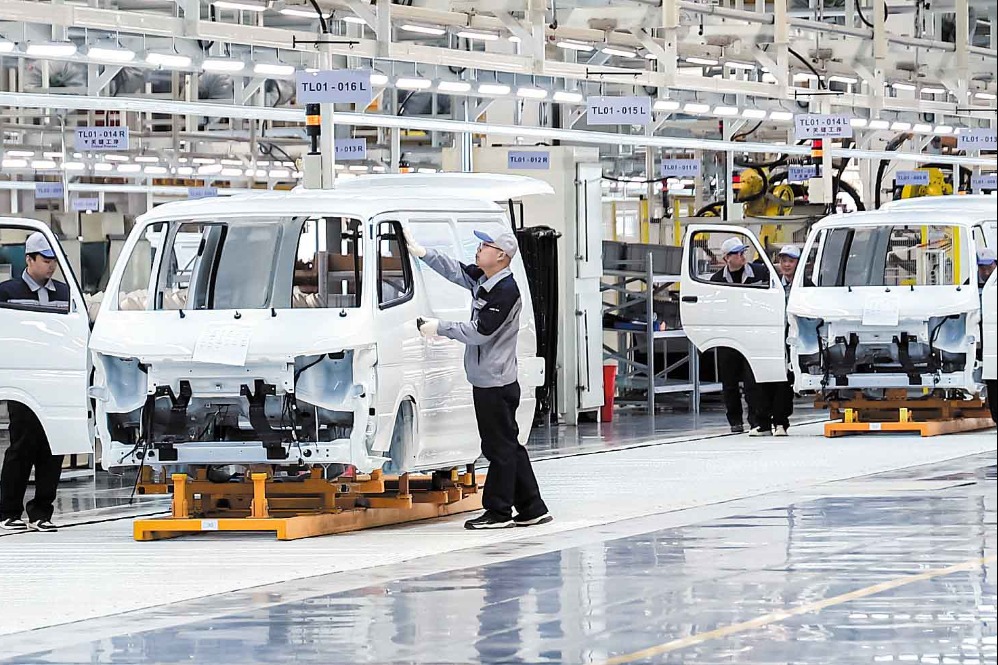BRI-backed project drives green tourism in Indonesia


Amid the accelerating global push for green transformation, the Indonesia Morowali Industrial Park — a landmark project under the Belt and Road Initiative framework — is launching its first green tourism drive with local villages for a sustainable future.
Standing as a landmark cooperation between China and Indonesia since its inception in 2013, the project has harnessed the region's abundant nickel reserves to grow into a large integrated industrial cluster, attracting a total investment of some $35 billion from enterprises in China, Australia, Singapore, and Indonesia.
Generating nearly 100,000 direct jobs and emerging as a vital pillar in Indonesia's nickel deep-processing and new energy industrial chains, the project has taken a landmark step in bolstering its green transformation.
In collaboration with the villages of Fatufia, Bete-Bete, Padabaho and Mbokita, it held the signing ceremony on June 30 of its first green tourism partnership project in Labota village, Morowali, Central Sulawesi, marking a strategic transition for the industry-centered industrial park toward a greener, more inclusive, and collaborative model of development.
The event was attended by representatives from the Morowali Regency Office of Youth, Sports and Tourism, the Bahodopi District Government, park enterprises, and local villagers. PT Indonesia Tsingshan Stainless Steel, PT Indonesia Guangqing Nickel Industry, PT Huayue Nickel Cobalt, and PT Dexin Steel Indonesia signed cooperation agreements with the respective village heads.
Representing the project's first community-centered project leveraging corporate resources to support sustainable development at the village level, the initiative sticks to a philosophy that "resources are not just for today — they must benefit future generations."
Mohammad Amin, head of the Morowali Office of Youth, Sports and Tourism, said in his speech that Bahodopi is rich not only in mineral resources, but also in pristine natural beauty and diverse cultural traditions.
He emphasized that green tourism offers a vital pathway to integrate environmental protection with economic growth, and serves as a key lever for inclusive prosperity.

Arsan SPdI, district secretary of Bahodopi, stressed, "This signing ceremony is like a golden key to the future — a major milestone for joint tourism development between the park and local communities."
He noted that the initiative will not only advance systematic development of natural and cultural assets, but also boost community engagement, generate jobs, and power the region's green transformation.
To ensure the smooth implementation of the project, each of the four partner villages has established a dedicated tourism co-development team, with each team consisting of a nine-member core group that focuses on key issues through on-site visits and coordinated efforts, driving the effective execution of joint development initiatives.
An official appointment ceremony established the roles and responsibilities of each village and formalized coordination mechanisms.
It has been learned that under the agreement, the cooperation will focus on three key areas: first, advancing joint infrastructure development with an emphasis on improving tourism-related facilities; second, establishing dedicated platforms to strengthen promotion of the tourism industry; third, empowering tourism training by deepening ecological education and providing targeted skills development programs.

The initiative is funded by the IMIP Sustainability Foundation and includes regular evaluation mechanisms to ensure accountability and progress.
Emilia, the project's director of communications, stated, "We firmly believe that a resilient industrial system must be built on sustainability, with full consideration of long-term ecological and community impacts."
She added that the park is actively advancing its green, low-carbon transition to build an industrial ecosystem that is resource-efficient, eco-friendly, and community-inclusive.
The initiative aligns with the core goals of the UN 2030 Sustainable Development Agenda and strongly resonates with the green development vision of the BRI.
It has been learned that this multi-stakeholder model of co-construction and shared development offers a compelling example for other industrial zones pursuing green transition, as the project thinks harmony between people and nature is the cornerstone of lasting civilization, while co-construction and shared benefits are the way forward for global progress.
Please contact the writer at tanguoling@chinadaily.com.cn




































